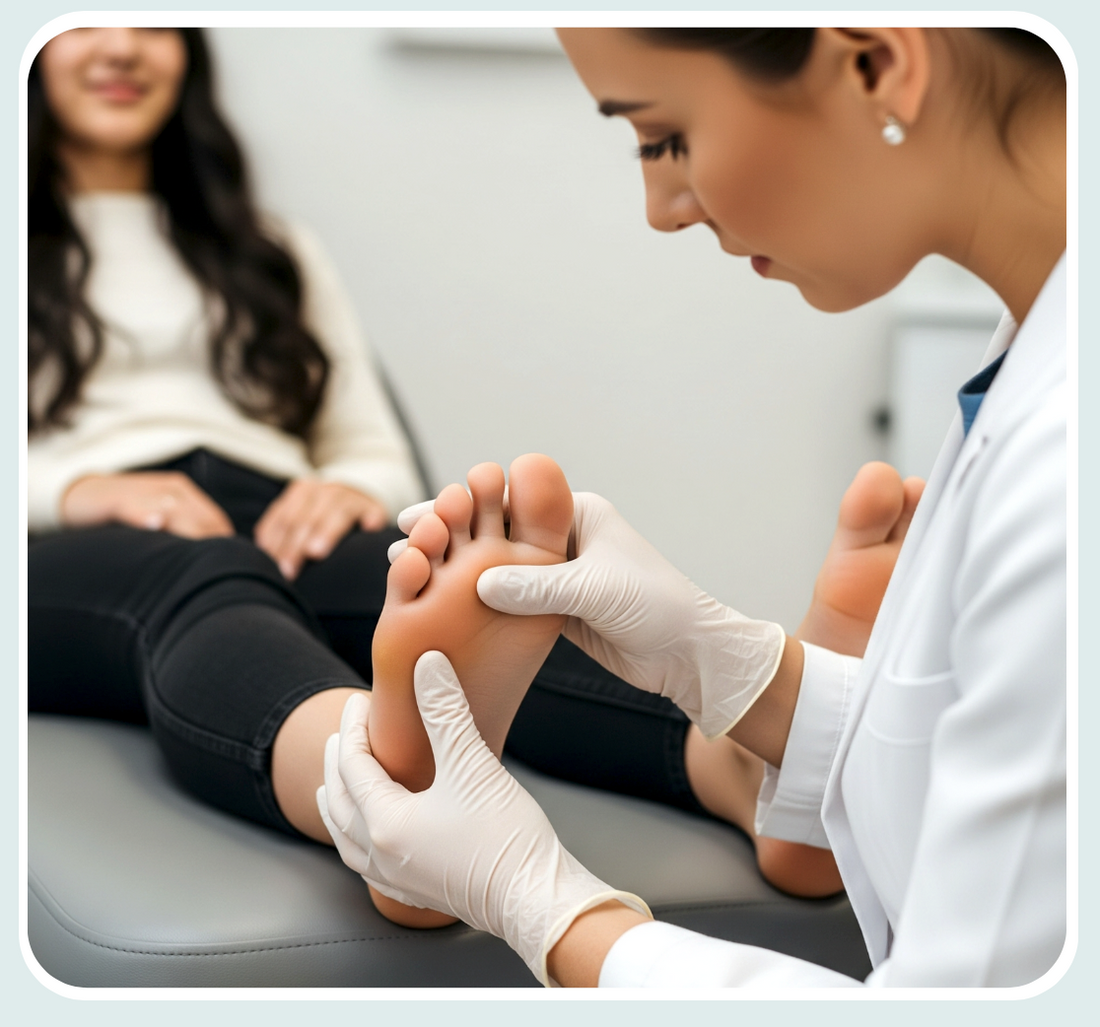A big part of my role as a podiatrist is conducting diabetic foot assessments. If you have diabetes, it’s important you have a full diabetic foot check competed by your diabetes nurse or a podiatrist, at least twice a year. Diabetes can impact many parts of the body, but the feet are especially vulnerable. High blood sugar levels can lead to poor circulation and nerve damage (neuropathy), making it harder to feel injuries, pressure points, or infections. That’s why daily at-home foot checks are crucial—and this is something I strongly advise each and every one of my patients I see with diabetes.
Catching minor foot problems early could prevent serious, life-changing complications. Take charge of your foot health (starting today!) by performing regular checks at home. Here’s how…
Why foot checks matter
People with diabetes are at increased risk of:
- Foot ulcers (open sores that take a long time to heal)
- Infections
- Loss of sensation (neuropathy)
- Poor circulation and delayed healing
- Amputation in severe cases
Early detection of any changes can prevent serious complications and help you get treatment before a problem worsens.
What you’ll need
- A well-lit room
- A hand mirror or a phone camera (to check hard-to-see areas, such as the soles of your feet)
- A notebook or app to record changes
- Moisturiser
My step-by-step guide
1. Inspect the tops and bottoms of each foot
Check for:
- Cuts, blisters or wounds
- Red spots or areas of swelling
- Bruising or colour changes
- Cracks, dryness, or peeling skin, such as heel fissures
- Hard or thickened skin, such as corns or calluses
- Any drainage or unusual smells
Use a mirror or ask for help if you can’t see the soles of your feet clearly.
2. Look between the toes
Fungal infections or sores can hide between your toes. Gently separate them and inspect for:
- Redness or raw areas
- Moisture buildup
- Cracks or white patches
3. Check your toenails
Look for:
- Ingrown toenails
- Thickened or discoloured nails (possible fungal infection)
- Sharp nail edges that could cut surrounding skin
Avoid cutting nails too short or digging into the corners. To learn more, read our blog on what is the correct way to cut toenails?
4. Feel for sensation changes
Use a feather, tissue, or your fingertip and gently stroke various areas of your foot. Ask yourself:
- Do both feet feel the same?
- Are there any numb or tingling areas?
Loss of feeling can be a sign of neuropathy (nerve damage)
5. Check temperature
Use the back of your hand to feel for hot or cold spots—these could signal inflammation or circulation issues.
What to do if you find something
If you notice any of the following, contact your healthcare provider immediately:
- Cuts, sores or blisters that don’t heal within a few days
- Swelling, redness, or warmth (signs of infection)
- Changes in colour (blue, black, pale, or red patches)
- Severe dryness, cracks, or patches of thickened skin (e.g. corns/calluses)
- Sudden numbness or pain
Never try to treat serious foot issues at home—especially if you have reduced feeling in your feet.
Extra top tips
- Moisturise daily, but avoid moisturising between the toes.
- Never walk barefoot, even at home.
- Trim toenails carefully—straight across, not rounded to avoid ingrown toenails
- Wear properly fitting shoes with clean, dry socks.
- Check shoes before wearing for stones, sharp objects, or seams that could irritate – I’ve had many patients who have had ulcers develop from puncture injuries (such as stepping on a sharp stone or pin that’s punctured through the sole of their shoe and into their foot!)
Key takeaways
Performing a diabetic foot check at home takes just a few minutes a day but can have a lifelong impact on your health and mobility. Staying consistent and knowing what to look for helps you to prevent complications and catch potential problems early. Your feet carry you through life—make checking them a daily habit.

